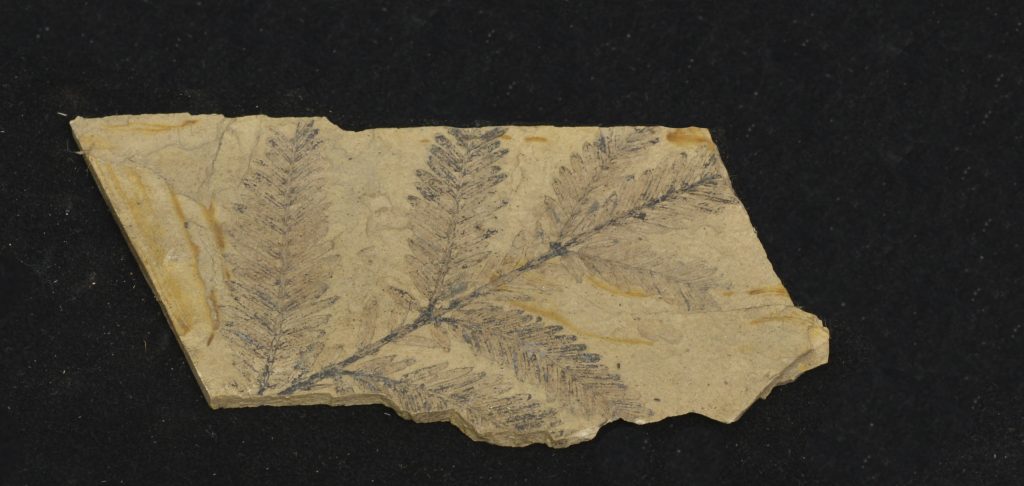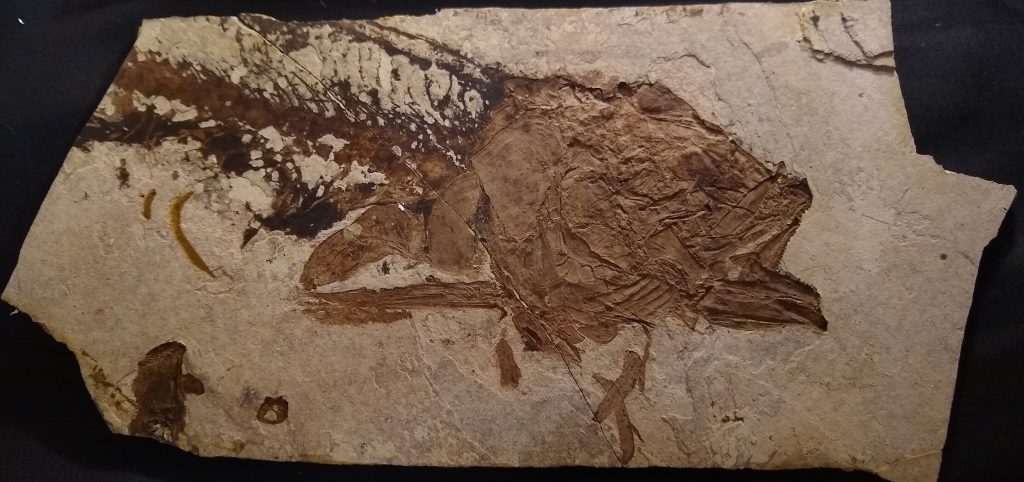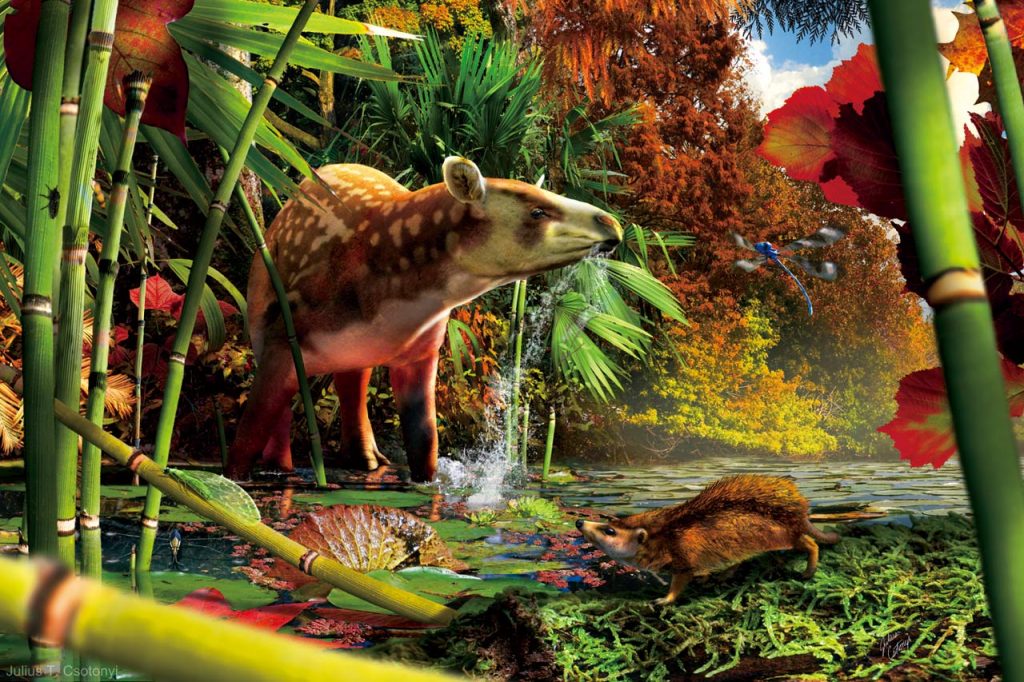Driftwood Canyon Provincial Park is one of the richest fossil beds in British Columbia, and also boasts the title of most northerly fossil site of Eocene insects in North America. Besides insects, both terrestrial and aquatic plants have been found, as well as rare vertebrate fossils. Radiometric analysis performed on volcanic ash found in the shale beds identified the site to be from around 51.7 million years ago, placing it in the early Eocene epoch which lies between 56 to 33.9 mya. Eocene comes from the Greek words ēos (dawn) and kainós (new), referring to the “dawn” of the “new” animals, or the period when modern animals began appearing in the fossil record. Some of the fossils found here resemble organisms that still live in the Bulkley Valley today, but the climate of the Eocene was very different from that of today. The earth was much hotter, to the point that there was no permanent ice at either of the poles. At the time, the area that is now Driftwood Canyon was a tropical swamp or lake.
The flora growing around Driftwood Canyon would have been a strange mix of familiar and exotic species. Fossils of pine, alder, and birch have all been found, but of the more common plant species at the site is Metasequoia or the dawn redwood. The genus was well-known from fossils since 1941, and believed to be extinct. In 1944 however, a small stand of unknown trees were documented in the Hubei province of China, and classified as a living member of the genus, Metasequoia glyptostroboides. Unlike other redwoods, the dawn redwood is deciduous, dropping its needles seasonally. In the hot climate of the Eocene, they were able to grow as far north as Axel Heiberg Island at 80° N latitude. Curiously, the dawn redwood is not the only species found here that are now native only to China. The museum also has samples of ginkgo and Tetracentron, both endemic to mainland China. As well, fossils of Dipteronia, a type of soapberry have also been found at the site.

Fossilized insects are also common to the shale beds. Water striders are some of the most well-preserved, with their distinctive spindly legs, but dozens of other species have been found including aphids, march flies, gnats, weevils and wasps. A species of green lacewing was named Pseudochrysopa harveyi in honor of the park’s founder, Gordon Harvey. In 2014, a study on beetle fossils found species that were obligate palm-feeders, meaning there must have been palm trees growing at the site as well to sustain those populations.

One of the more ubiquitous fossils located here is Eosalmo driftwoodensis or the dawn salmon, the oldest known member of the salmonidae family, which also includes whitefish and char. Fossils from all life stages are present in Driftwood Canyon, meaning it likely spent its entire life in fresh water, rather than migrating to the ocean.

Specimens of bowfin, a type of air breathing fish are present at the site, as well as the suckerfish genus Amyzon. Other vertebrates include two birds removed in 1968 and 1970. More recently in 2004, a team of paleontologists discovered jaws of Heptodon, an early relative of the tapir, and a tiny hedgehog relative that was estimated to be only two inches long. The new species was named Silvacola acares, meaning “little forest dweller”.

Museum staff recently refreshed our fossil exhibit to include many fossils never before displayed. Samples from Driftwood Canyon include a collection of insects, plants, and fish described above. As well, fossils from other sites around the Bulkley Valley, including cephalopods, snails, and shellfish from MacDonnel Lake, Copper River, and other places have been added to the display. Be sure to stop by to see our exhibit in person and learn more about the region’s natural history!
References Cited
“Driftwood Canyon Provincial Park”, Wikipedia, August 19, 2020, en.wikipedia.org/wiki/Driftwood_Canyon_Provincial_Park
“Prehistoric Hedgehog, Tapir Species Discovered in Canada” Sci-News, July 9, 2014, www.sci-news.com/paleontology/science-prehistoric-hedgehog-tapir-species-canada-02051.html
“50 million year-old bird comes home to roost” Interior News, April 8, 2019, www.interior-news.com/news/50-million-year-old-bird-comes-home-to-roost/
Lorsa, Tony “A Review of the Driftwood Canyon Fossil Bed” Sheila Peters, July 10, 2017, sheilapeters.com/2017/07/10/a-review-of-the-driftwood-canyon-fossil-beds/